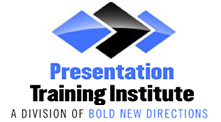* Who are they? (age, gender, profession)
*What prior knowledge do they have on the topic?
*What are they like? ( consider what a typical day might look like for them)
*Why are they here and what are they hoping to get out of the presentation?
*What concerns do they have? Pain points?Â
*How can you solve their problems?
*What is your goal for them? How can you best reach them?
Now that you have an idea of your future audience, here are a few tips for planning your presentation.
- Define Your Objective
What is the purpose of your presentation and what are you hoping to achieve? Are you simply sharing information? Are you trying to persuade the audience? Are you promoting a new strategy or product? Establish a concrete objective before moving forward.Â
- Decide on Your Angle
Now that you are familiar with your target audience, you can decide on the best way to achieve your goal. For example, you would never give a “how-to†tutorial to a group of top level executives. Finding the best way to approach your audience is just as important as the content itself. Depending on your audience you can take a number of different approaches. For instance, you might need to use charts and visuals with executives in order to show clear-cut information while you might need to break things down and take a step-by-step approach with your detail-oriented crowd. If you are speaking to a group of millennials they might love to think outside of the box and interact through group activities while an older crowd might prefer a presentation that has a more traditional approach.Â
- Develop Your Kep Points
Once you have decided on an angle you are ready to develop your key points and outline your information. Depending on the audience, you will need to decide whether or not to make the presentation more text heavy or to include images, animations, and infographics.Â
- Design Your Slides
Depending on your audience, you may need to adjust the amount of content on each slide. As a general rule of thumb, however, stick to the “less is more†motto. You should also choose pictures, animations, and video clips that relate to your audience and demonstrate a shared interest.
